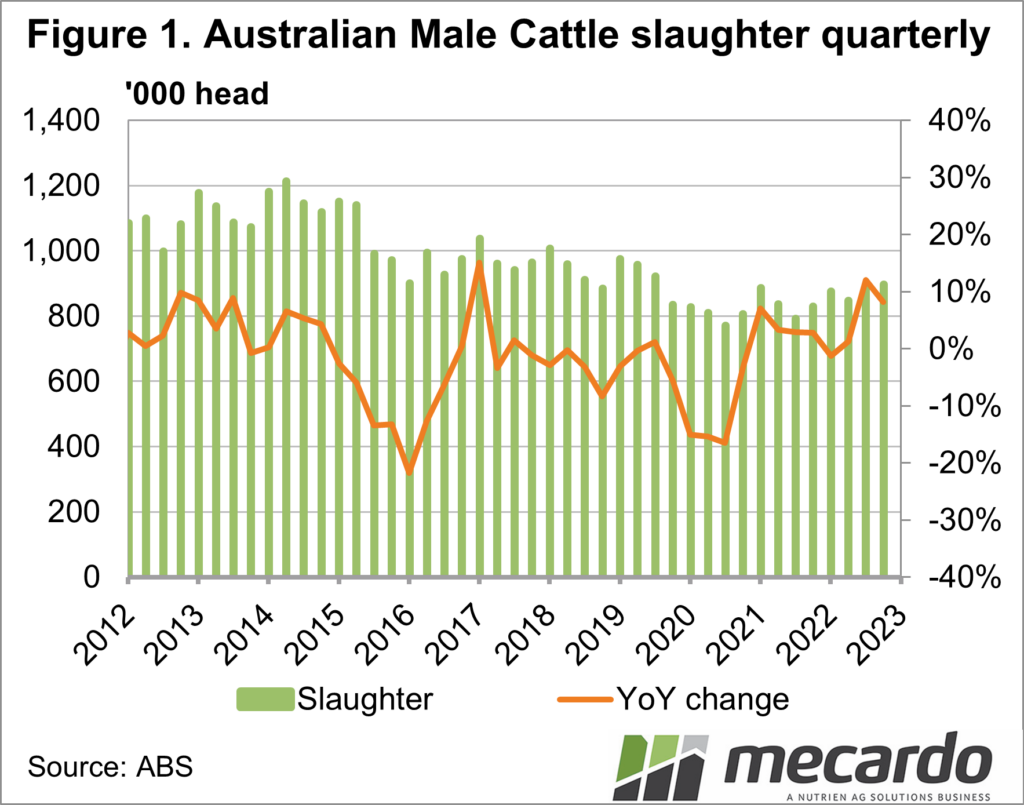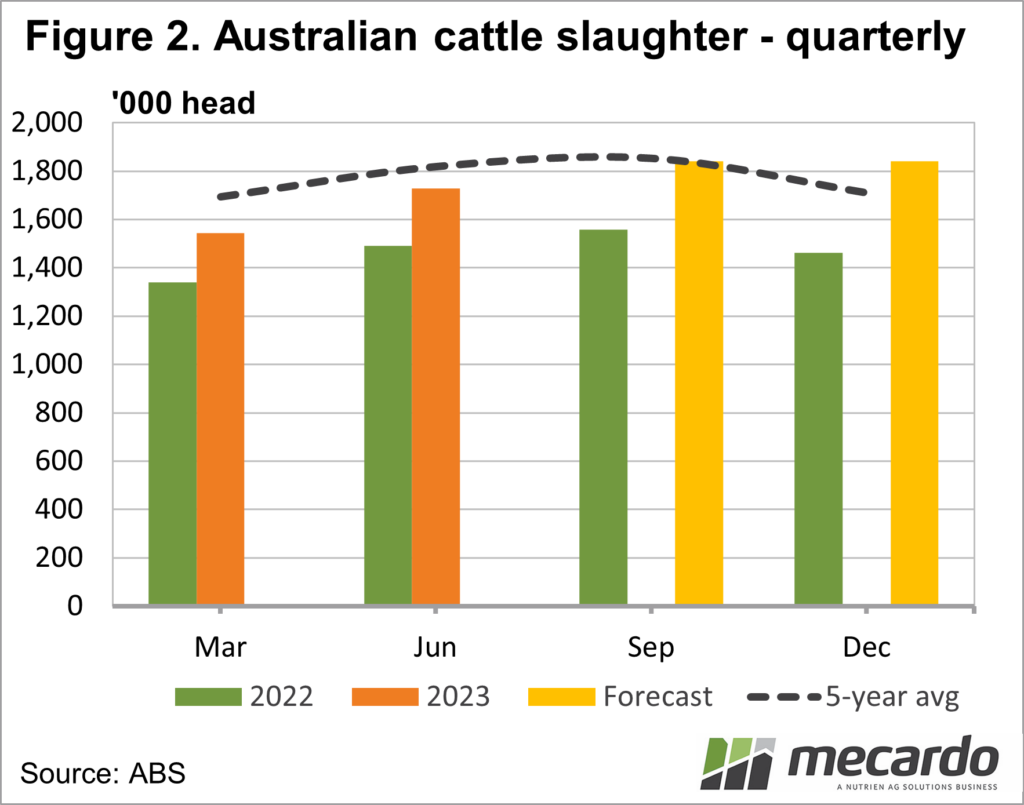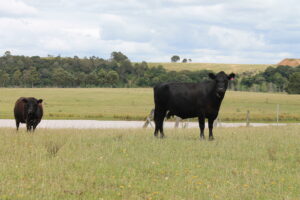Last week Mecardo looked at the Australian Bureau of Statistics (ABS) cattle slaughter and beef production data released last week, in terms of the numbers of females being slaughtered. Here we take on the male slaughter side and assess how slaughter is tracking relative to forecasts.
While female cattle slaughter is a measure of herd size, and its growth or contraction, male slaughter gives a better insight into the previous calf crop, and how much high-value beef is being produced.
Figure 1 shows male cattle slaughter (that is bulls and steers) which hit a three-year high in the June quarter. 898,000 head made their way to the processors in the June quarter which saw slaughter rise 1% above the March quarter, but 8% higher than the June quarter in 2022. For the year to date, male cattle slaughter has grown 10% on 2022.
The strong growth in male cattle slaughter is a good indication of the increase in the herd and the calf crop. We can see in Figure 1 that despite the strong growth in male cattle slaughter, there is still plenty to go before it matches the levels of 2018-19, let alone 2014-15.
This is interesting as the official herd numbers, as reported by the ABS, of 27.58 million head, was not far off the level of 28.05 million head, the most recent peak. Part of the reason we are perhaps not seeing higher male slaughter is the increase in cattle being slaughtered at an earlier age.
The very tight supply of 2021-22 saw more cattle going through feedlots and a decrease in slower-growing heavy grassfed steers. It seems this side of the supply might still be recovering if it does at all.
Total cattle slaughter does seem to be a little lower than expected. Meat and Livestock Australia (MLA) forecast cattle slaughter would hit 6.95 million head. The first half of the year has seen 3.27 million head processed. This leaves 3.69 million head to reach the target.
Figure 2 shows slaughter will have to grow 22% on 2022 figures in the second half of the year to reach the target.
What does it mean?
While slaughter has been stronger than last year, and at a 3-year high, it could be said that for 2023 thus far it has been lower than expected. We do expect cattle slaughter to ramp up further in the second half of the year, and that is likely to further test price support levels unless slaughter capacity can increase.
Have any questions or comments?
Key Points
- Male cattle slaughter in the June quarter hit a three-year high.
- Despite this, male cattle slaughter is a little lower than could be expected.
- More cattle are likely to hit the market in the remainder of the year, testing price support.
Click on figure to expand
Click on figure to expand
Data sources: ABS, MLA, Mecardo














